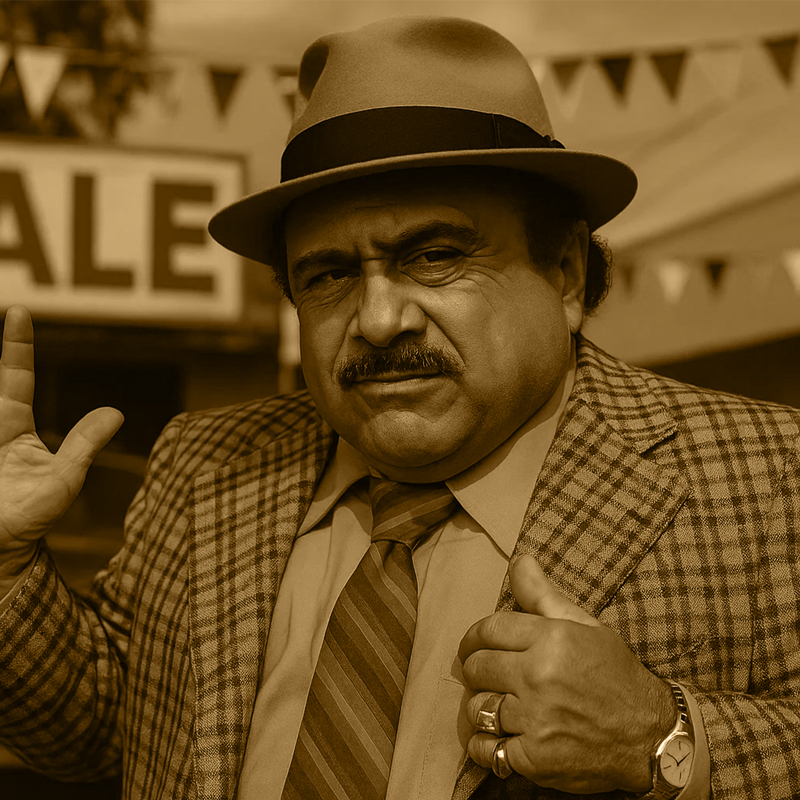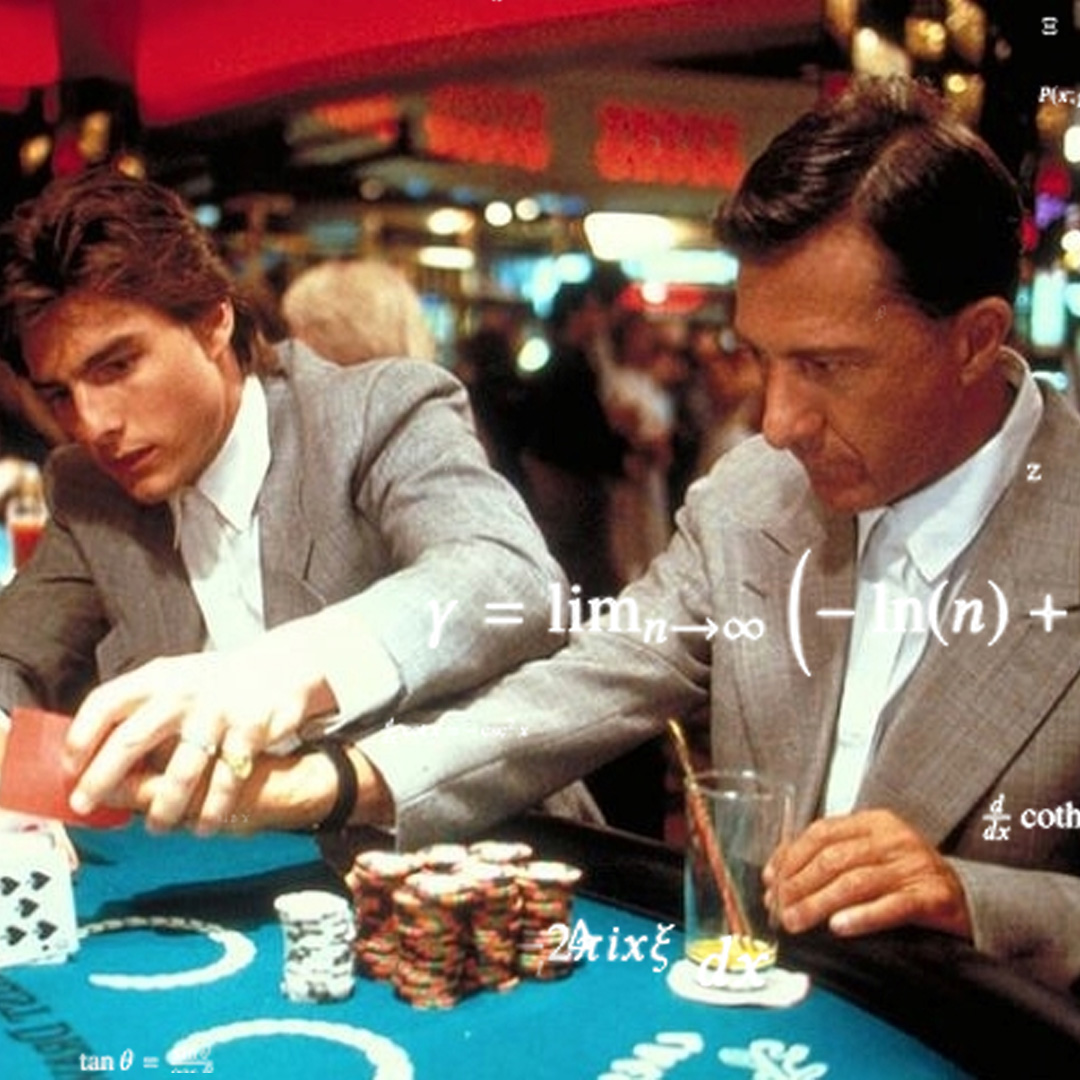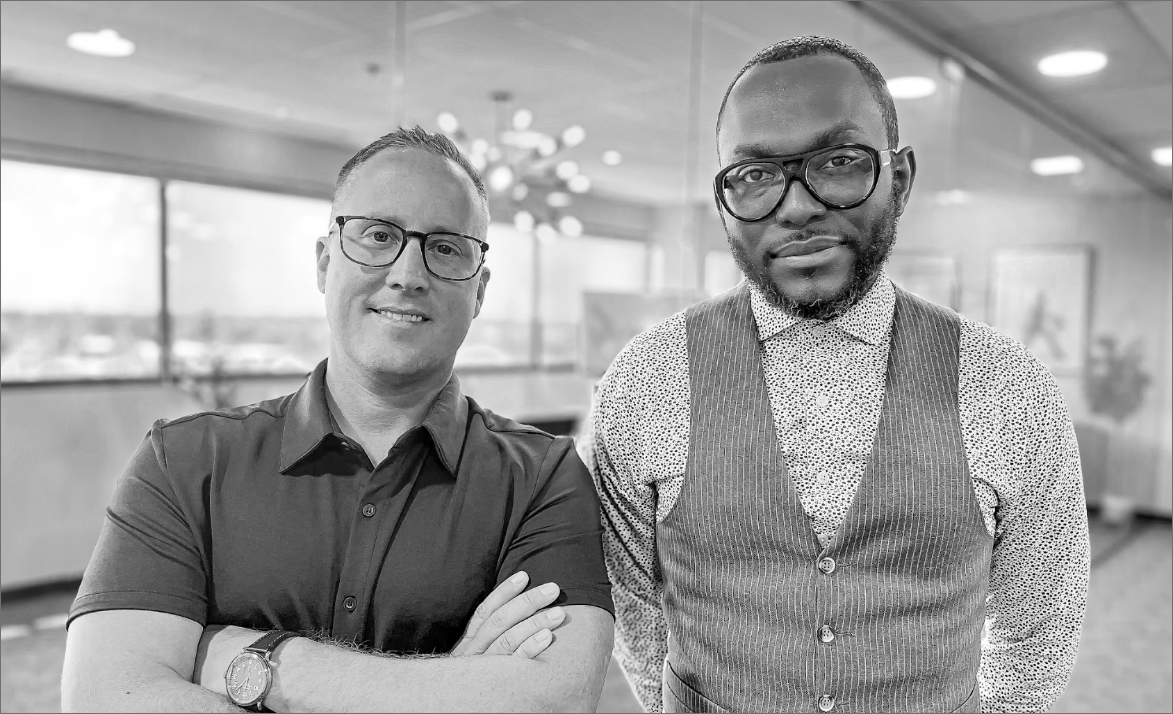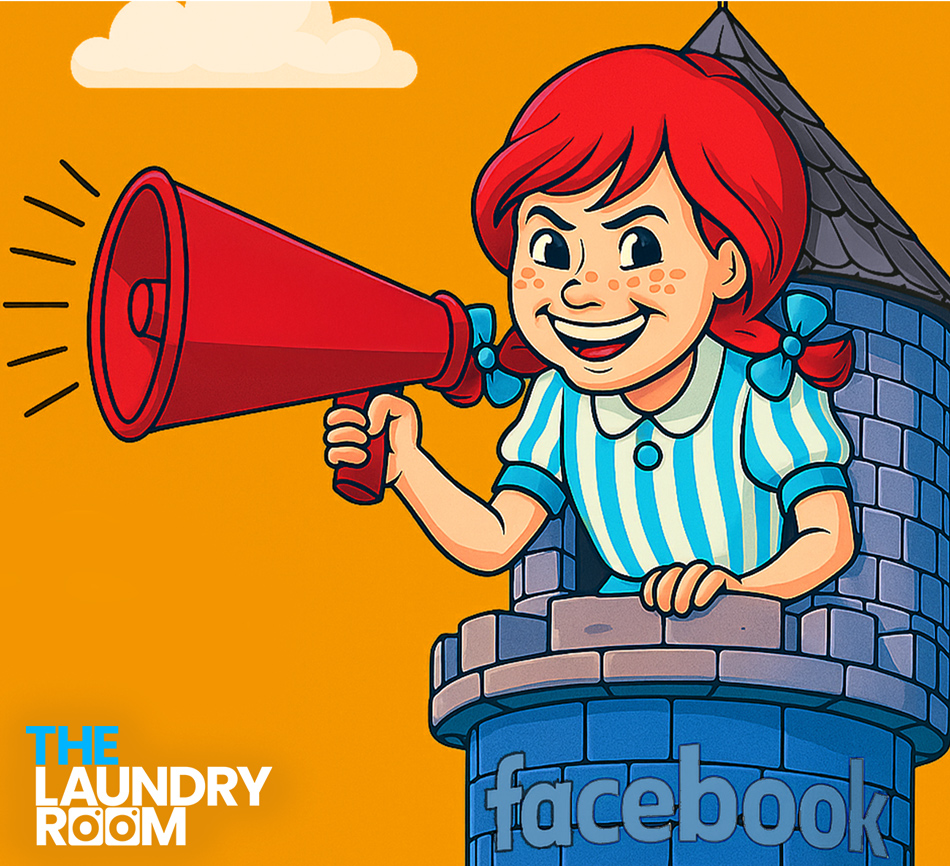00:06 – 00:34
What’s up, everybody? Glad to be here today. Another podcast session.
Got the crew with us. Thank you guys for listening. We’re three, three episodes.
Three episodes in.
That’s momentum. That’s official momentum now. Happy to be here.
We’re going to talk today about why agencies get canned, why agencies get fired.
Clients get upset. Clients change.
00:34 – 01:03
Agencies might change sometimes, too.
And we’re going to talk about why. What are those things? Why does it happen?
And interesting enough, just before this podcast, we had a really interesting meeting with a media provider. We call him a media vendor. And he was fired.
He was fired from a client. They had a rather large engagement.
01:03 – 01:29
Now, with media, it works a little different, I suppose, than with agency.
So media guy working with agency. So his client, being a media guy, is the actual agency.
Same dynamic.
Same thing, totally. And so this engagement was probably a little shorter than length. I don’t think this was a yearly engagement or anything, but ran a campaign.
01:29 – 01:53
He’s over there at media agency high-fiving everybody, talking about how great of a job he did, lowered their in-store costs, so the amount of money it cost them to get somebody to come into the store. Went way down during this campaign. He’s high-fiving.
Trying to follow up with client over and over at agency.
01:53 – 02:18
Crickets, we know this game too, right? You do something. You think you did a great job. You’re following up. Hey, how’s it going?
How’s it going? What’s going on? Let me show you this.
We want to talk. Gets ghosted, I think, sounded like for a few weeks. And then finally got the Dear John email.
Yeah. Before we maybe list top reasons why clients are firing agencies,
02:18 – 02:43
maybe we just spend a second talking about why they hire an agency. Why did client reach out in the first place?
Yeah. I guess the lure of having a firm or an agency do work, there is a glamour piece to it. One side glamour.
I got some really smart people.
02:43 – 03:14
Cutting edge.
Cutting edge, innovative. And then on the other side, there’s a, we don’t have the time, the expertise, capacity, etc. to do it.
So it makes sense to join or to seek this agency out. Just to then have something go wrong or something happen where client says, yeah, I don’t like this. This is not working or it’s not what I thought.
03:14 – 03:43
And agencies often, we fell into this. You get canned and you don’t have a clue why. You’re left scratching your head thinking that, hey, we did everything that we agreed to.
We went above and beyond. So says us. And client is in a completely different headspace.
And I think this is going to be a great conversation
03:43 – 04:12
because to really get down to the get down, to why clients are inevitably canning an agency, and what can agencies do about that? What should they be considering to avoid it and then to fix it after it happens?
I think what we see a lot too is like, you know, you get in and let’s, we know, you’ve either been burned or it’s your first time.
04:12 – 04:36
So you go to agency, you’ve been burned by someone else. So you’re super suspicious.
You’re guarded. You think, hey, you get some of that, okay, this is an ad guy. These are ad people.
These are slicksters. These are salesmen. Or that’s the burned category or the first time.
And you have no idea what to expect. You have no idea what your ROI is going to be.
04:36 – 04:53
You’ve never ran media.
This is what we see. A lot of guys want to come in, and organizations that want to come in, and I’ll stick on the first time bucket, like, hey, we’ve heard about digital. Our website’s kind of not that good.
We don’t do a lot to generate traffic. We’re not doing a lot.
04:53 – 05:14
We’re not really out there.
We don’t do traditional stuff. We’ve relied on word of mouth and referral. And we’ve grown our business organically over the past, call it 10 to 25 years, depending, right?
And now they’re ready to kind of get serious about growth in some regard. Hey, we’re going to get serious about our communication. We’re going to get serious about marketing.
05:14 – 05:40
And we don’t have the skills in-house to do those things. So they call, and we court, and courtships are always great, right? It’s just like the kind of first month of an engagement, too, is it’s the honeymoon phase, right?
Like, it’s time and material. You’re not on the hook for results just yet. So everybody’s happy.
Everybody’s excited. Everybody’s motivated.
05:40 – 06:17
And where I think it goes, what makes it really hard for us as an agency is when we work with someone who hasn’t marketed before, or ran media, let’s say, it’s really hard for us to know what their outcomes are going to be.
Now, we could get a good idea of how much traffic we could drive or how many forms we can expect, what a conversion rate could be on a page. But as to the success of the bottom line of that organization, it’s really hard for us to know, hey, if we give you 10 guys, when you talk to referrals, and this is the problem we get
06:17 – 06:46
into a lot, is like, hey, what’s your close rate? Oh man, our sales team is amazing.
You sit down with us, and we’re closing over 60% of our leads. Yeah, well, true. Not calling them liars, but when 99% of your leads are coming in through referrals and word of mouth, those are like the highest converting leads.
When you’re coming in to savvy internet buyers who haven’t worked with you before and don’t know who you are, you’re in a much different ball game.
06:46 – 07:14
And I’m just talking from the sales seat. So I’d say like right off the bat, going into it, not being able to, for the first timers, that first entry point, those first 90 days are just benchmarking.
You’re benchmarking to see, all right, where are our wins and where shouldn’t we play? And I think that’s the first piece of this, of like the breakup call of like the stomach for the timeline.
07:14 – 07:42
I think the perception is instant gratification.
And these guys to stick it out, a meaningful amount of time to generate a meaningful sample to make some changes that will impact a campaign or marketing objectives overall. A lot of guys have a hard time stomaching that timeline as a first time of, you know, you’re dumping in 10K a month, call it.
07:42 – 08:03
Month one, you’re excited.
Month two, you’re like, okay, I’m a little nervous, but I’m going to stick to the process. By month three, you want to see something. And I think it’s hard for some guys, like, coming out of the gate that have never done it before.
Like, what is that something? That’s maybe the next piece.
Well, I think maybe a way to encapsulate that,
08:03 – 08:35
what you just said. Why are clients getting rid of agencies? Unspoken expectations.
There is no clarity on what should I expect in 90 days? And in getting that agreement, getting that very explicit agreement that in 90 days, we’re going to have a benchmark. Are you good with that client?
Yes, I am. And the hard part is, you don’t know if you’re getting a dirty
08:35 – 09:03
yes, a dirty agreement from that client. And inversely, client is rooting for agency.
They’re rooting that this is going to pan out.
They want it to work. They’re not doing this hoping you’re going to fail.
And I think clients fall guilty of not being very clear on what has to happen.
09:03 – 09:25
And the guy we were talking to this morning, that’s exactly what happened. That he’s literally high-fiving. They’re high-fiving internally thinking they hit one out of the ballpark.
And client said, your performance didn’t… We’re not going to re-up this part of our package, our media spend, because you didn’t hit our performance goals. And I saw your face on the call.
09:25 – 09:48
Like, what were the performance… Did he know what the performance goals were before the thing started?
Exactly. Exactly. So that…
And, you know, we’ve fallen victim to this as well. When you don’t do a good job explaining and getting agreement, acknowledgement of what the goals are, how are we measuring whether we’re hitting those goals? You’re doomed.
Might not happen
09:48 – 10:16
day 60, might not happen day 120, but the engagement is doomed.
So to have that explicit clarity on what the expectations are, I was reviewing some of the notes that we had, some of the research that we did a couple of years ago for our chief executive presentation. And one of the things that we dove into was what should marketing budgets be?
10:16 – 10:43
And, you know, they were all over the map, right?
So Small Business Association says 7 to 8% of gross revenue. That’s what your budget should be. We also looked at about a dozen samples of other companies, and one thing that stuck out was Salesforce in 2018, I think it was, Salesforce spent like 50% of their revenue
10:43 – 11:20
in marketing.
It increased their business 25%. So they made a decision, and I doubt they do that every year. Maybe they do.
I mean, when you’re in scale mode, you do something like that. But sticking on the SBA, Small Business Association, 7 to 8%, you own a $5 million, $10 million company. I see these guys everywhere saying that you’re going to invest $400K to $800K, depending on a $5 million company versus a $10 million, right?
11:20 – 11:52
So you’re in the under a million bucks a year. I see a lot of these people have teams, too, or these organizations have internal teams. So they will most likely have a marketing lead, sometimes in the form of a CMO, but in some instances, most instances, it’s a marketing leader.
Then they have some sort of doer or coordinator, we would call it, whether that specialty lies in design or specialty lies in social or specialty lies in sales enablement
11:52 – 12:17
for sales team, they’ve got out of that budget already dedicated resources in house. And I think it’s really interesting when we talk about budget and then we talk about hiring agency, that if your budget all in for sales and marketing is, let’s just say $500,000, you’re already taking off $300,000 for a team of three.
12:17 – 12:41
So now you have $200,000 left.
So now your sales and marketing budget of $500,000, $300,000 is already used up to do what? Already take care of the sales that you need to close. So these are your referral bills.
You got to have a sales guy there to take the lead that comes in. Then you also have in some capacity a couple of marketers who are supporting sales team.
12:41 – 13:03
Hey, I need new brochures.
Hey, we’re going to this event. Hey, we need to update our landing page about the P-17s. Got to update the content, whatever the case is.
Those are things deemed by organization. Hey, we have to do this stuff to operate our business. I think it’s different when you jump the line and go over to hire an agency.
13:03 – 13:27
You don’t look at the agency as the, hey, I need these guys for my business to run. You’re looking at the agency as, I want these guys to grow my business. So I think it’s tough when you get a situation where you’ve got a 500K budget.
300K is used up for internal needs. Now you got 200 left over to do all the growth for you, right?
13:28: – 13:50
So now less than half of your budget is dedicated to the thing that you want most out of marketing, and you’re already teed up.
So that’s a budget thing. Maybe not necessarily, we’re talking about breakups and getting fired, but that is, I see, a big-
Whose fault is that? Is that agency’s fault or is it a client’s fault?
Not to disclose.
13:50 – 14:21
I don’t know. I don’t know, Mike.
That’s a good question, man. Because organization needs those roles, no? Maybe.
Maybe sometimes yes, maybe sometimes no. Certainly from a sales role, you need that role. And for the most part, there are enough in and out content things, communication things happening at an organization that would justify a full-time in-house person to be on the ground, understand your product better than anybody else,
14:21 – 14:43
be able to somewhat of a jack of all trades, right?
Fumble around in the website, be able to place a buy for you, be able to know how to create a booth. You know, you would want these kind of things that you know you’re going to need all the time in-house. But I don’t know.
When you go and you’re hiring now, looking for an agency to take you to the next level,
14:43 -15:09
that is a good question. Like, is it on agency? We’ve done that.
I mean, we’ve went in there and was like, hey, guys, you’ve got a lot of people doing the wrong thing. We’ve done that multiple times. Sometimes it works out really great.
Client takes our advice, or at least listens and doesn’t get upset, right? Other times, they’re, yeah, yeah, yeah. We’re doing it this way because we’ve always done it this way, and it’s got to be done that way.
15:09 – 15:33
Yeah. Unexpected or mismanaged expectations. I don’t know, as a client, what I’m actually getting.
Agency doesn’t have clarity as to what they’re on the hook to deliver, and clients break up. They get rid of us. Another one,
15:33 – 16:06
poor communication.
And it’s funny, both of us have daughters, and we talk often about the importance of developing communication skills. You’re upset. I want you to share your feelings, but I want you to do that in an articulate way so that the hearer can respond.
Instead of you giving a tantrum and just spewing out your frustration,
16:07 – 16:40
and then you get a reaction from the list, from the hearer. And it’s funny how you take those lessons as a parent, and it’s the same lesson in business. Whether it’s with your team member or with a client, that ability to communicate.
And agencies get caught up in a lot of jargon, a lot of, we’lll be doing.
High-fiving each other at the shop, not translating over into client language.
16:40 – 17:18
Yeah.
Totally.
And so you have this, ships passing in the night, and don’t even realize that they’re passing in the night because of bad communication. And I think that’s one of the maybe hardest parts of being a professional service provider to a business, to a client, is how do you either assimilate into how they speak, right? So that you are speaking on one term, you have the vernacular or the vocabulary that they’re using,
17:18 – 17:41
and then teaching client vocabulary that you use as an agency.
So that when we’re having a meaningful conversation or trying to have a meaningful conversation, there is alignment on what’s being said. And how many times have we left a meeting and we debate about what we heard? Hey, this is what client said.
No, that’s not what they said.
17:41 – 18:11
Client said this, right? And client is probably doing the same thing.
Oh, that’s not what you told me. Agency, you told me this. And you have the one, you call it one degree of separation.
Yeah, after a couple days.
A couple days, you’re 100 miles apart. Right, and so that is one of the traps.
In the early days, when we were just starting the agency and we just did PPC, just managed ad accounts,
18:11 – 18:31
I would go in to these meetings and with the florist, we had a florist account early on, and I used to go in to these meetings and I would show them how many times their ad showed up, how many times their ads were clicked, and then the amount of web traffic that we generated for them.
18:31 – 18:49
And then I would show them the cost per click. How much did each click cost?
So I was in that meeting, and they probably looked, you know, talking about shoe be doing. I didn’t really know I was shoe be doing, but I was because I was talking about a bunch of things that they did not care about. Them,
18:49 – 19:14
you know, the click through rate was hot for us at that time.
Like, hey, we’re getting a 4% click through rate. Industry average is 1.5. These clicks are only costing 65 cents.
Industry average is 75 cents. High five. And I remember, like, a couple of meetings that they would just kind of like look at me like, I don’t even know what these terms mean.
19:14 -19:38
So we changed it. And I went and I took all their web traffic, total money that they were spending, total money they were making. And I showed them how every visit that came to their website was getting them $1.25 in revenue and costing them 65 cents.
So I just blanketed everything in terms that they would understand, hey, you’re paying me five grand.
19:38 – 20:03
Let me show you what you’re getting for that. And it was dollar cents back to them.
And missing that, oh man, it’s tough. And on that communication piece too, I think it’s form or type has a lot to do with it. If you noticed this morning, I got the impression that he was trying to reach back to that client that doesn’t want to renew.
20:03 – 20:24
He was reaching out, reaching out, reaching out. I got the impression that it was sending an email, sending an email, sending an email. And I think on agency side, I think that’s a bad habit of, well, I sent an email and he won’t respond to me, so no.
What do you say to the agency or firm,
20:24 – 20:51
certainly post-COVID, that has 99% of the communication that their team does is email, and they have a business? Because you say that and I can hear people saying, man, that’s old school. You want me to call somebody or pay a visit?
That’s old school.
Well, he got non-response. He was sending emails and not getting responded to through email.
20:51 – 21:12
I know we operate on email and back and forth. All good. That’s your preferred way of communicating. Okay. Email. That’s cool. But in the position that he’s in where you’re on the hook and you don’t know if you did good or not and you’re hiding, I look at it as hiding a little bit. Hiding behind. Oh. Hey, boss, look, I sent four emails over the last four days.
21:13 – 21:36
You never texted. You never called.
You never sent a letter through the mail. But those, I do think that there’s part of that bad on agency on that communication side. Like, agencies are, it’s easy to fall into like the routine of, okay, here’s your monthly report.
Let me know if you have any questions. Like, your days are numbered.
21:36 – 22:11
You’re a commodity.
If you’re getting to that point where you’re sending one email a month with a report that says, let me know if you have any questions, I mean, race to bottom.
So that communication, that work of certainly upfront with client, how do they prefer to be communicated to?
And what? She probably wasn’t taking his calls because, or responded to his emails because she didn’t want to talk about what he was going to high five about. What he cared about probably didn’t align with what she cared about.
22:11 – 22:38
They were talking about the in-store visit going down. Obviously not a big factor.
Well, and not to let the client off the hook here, because that communication is a two-way street. And clients are certainly guilty of not doing a good job either of sharing what matters or sharing what’s working, sharing what the insecurities are,
22:38 – 23:06
sharing what they’re on the hook to deliver to leadership. So one part of that communication work for agency is, do you know what that person, the physical person cares about?
Do you know what they’re insecure about? Do you know the friction or conflict they have internally about the work that you are providing for them? Because that would inform how you would communicate.
23:06 – 23:36
You know, we certainly post COVID, texting is all the rage. I text mostly now with clients that we’re working with. Rarely is a decision or consult being given through email.
It’s usually a phone call, mostly a text. It’s a, hey, here’s what I need, here’s what I’m thinking, what do you think? And that can be outside of nine to five now too.
23:36 – 23:59
I talked to two clients this morning before 8:30 through text. Now they’re able to start their day and have decisions made based on what we are doing or not doing for them. And it didn’t require video conference or an email follow up.
It was a text message. For some clients, it’s not going to work.
23:59 – 24:24
We have other clients who you better not text me before 8.30.
Email me what I need or what we talked about, and I’ll see you next month. So having that clarity on how do you want to be communicated with. You remember the client we had that, and we’ve talked about this on the show already, but the client who we were high-fiving because we thought we were transforming their business.
24:24 – 24:46
And from a revenue standpoint, I think we were. But we missed big time what they actually cared about. So here we are high-fiving, communicating poorly to them because we’re talking about something that didn’t really matter.
I hear you say this, and I’m like, yeah, that joker, he didn’t know what he was talking about. We crushed it for him. Another reason,
24:47 – 25:02
ego, agency ego.
And I think it gets into, you hit it a little bit too of like, these guys not knowing, like we get a lot of people that come to us and they’re like, oh yeah, we’re doing social. We’re already doing social. Or even on the flip, we want you to do social.
We get that a lot too.
25:02 – 25:22
Can you guys just do our social? Well, what does that mean?
What is you doing social now mean? What is us doing it for you mean? And I think they get into a lot, what’s hard for client is that they don’t know, but still guarded to some degree of like, what they’re currently doing.
25:22 – 25:42
Like you want to be proud of your work and in most cases, it’s hard work, and they’re putting in a lot of hard work. But when new agency comes in, or and I’ll start to keep it on working with agency, and then agency makes you feel like-
You’re dumb?
You’re dumb. I think that, oh no, no, no.
25:42 – 26:02
And that’s looking back on the account we lost that we were crushing it, it was ego.
It was us going, dude, you need to care about the thing we care about, because this is what matters most. No, no, no, don’t worry about that. You don’t need to worry about that.
Stick to this. No, man, that is-
26:02 – 26:22
That’s good. Clients are uncertain about what to do, but defend what they’re currently doing.
That’s it, man. That is it.
I don’t know if we should be doing this, but hey man, this is what we’re doing. I’m just going to defend that. So agency has to penetrate that, has to come in without making them feel dumb.
26:22 – 26:46
Right?
Or inexperienced or ill-equipped. Win them over, gain their confidence, and then at the same time tell them, all right, here’s what we really need to be doing. Right?
And ease them into it. That’s tough, man.
That’s hard. This is what we really need to be doing. That only comes and will be listened to after you’ve…
Check your ego.
Checked it and built trust.
26:46 – 27:12
Hey, I’m looking out for you, not for me. Right?
There’s a… You got to play that. And that’s what’s tough, I think, with the agency folk.
And certainly bigger agencies, I think it’s probably more of an issue. But the agendas, a lot of different agendas on what they want… What they want…
Agency guy wants client to do versus what’s best for client.
27:12 – 27:41
The conversations and training that we try to… Or mentorship that we try to give to our team. My favorite phrase in soapbox right now is, the goal is not to prove that you’re right, it’s to get to right.
So when you go into a conversation with client, that posture of, client, you’re wrong,
27:41 – 28:01
I’m right, accept that and let’s move on. Instead it needs to be, hey client, how do we get to right? What is the right thing for you, for our engagement?
I’m committed to doing that, are you? And as soon as you can get that agreement, now the only thing that matters is the work necessary to get to right.
28:01 – 28:32
And agencies, firms are guilty of not having that posture.
You let ego follow you into your office every day or into your client conversations, and when you don’t check it, people can see it.
You know, to that too, I think that’s where we probably can attribute some of our success to the fact that we were quite agnostic through all this digital shifting and changing and growth.
28:32 – 28:51
I think about like, if you go to an email company, the email company is going to tell you to go do more emails. If you go call Google, Google is going to tell you to spend more Google media.
Go to Facebook. Facebook is going to tell you to post more to social. You go to film a video production house,
28:51 – 29:20
they’re going to tell you you need more video content.
I think it’s hard. So did the breakup. I think it’s really hard when you’re working with an agency and it’s their instinct to give you more of what they do.
It’s a natural instinct for you to want to recommend the thing that you know best. As kind of an SME or certainly as an agency that specializes in a discipline. SEO company.
29:20 – 29:42
If you’re an SEO company, everybody you talk to, you’re going to say, hey man, you got to show up when people Google this. If you do that, you’re going to crush it. Well, that’s true.
That could very well be true, but there’s a lot of other things that could be done. And when you don’t, like you’re not calling your SEO guy and asking him what kind of video you should make.
29:42 – 30:20
So now you’re in this kind of lane that I think again makes it hard to sustain a long-term relationship.
You know, like if you’re only the guy for the thing, I think it makes it really hard to grow and flow with clients changing needs.
So we’ve talked about mismanaged or unspoken expectations, poor communication, egos.
30:20 – 30:47
For clients that everybody is saying to each other, client is saying to agency, agency is saying to client, this is going great, right? And some time goes by, all right, we’ve had this client for a year, we got some momentum, there’s retention happening, and then all of a sudden, you get the Dear John letter,
30:47 – 31:18
right? And it feels blindsided, just comes out of nowhere.
There is a defensiveness that the agency takes, and they don’t realize, we often don’t realize, that it’s rooted in complacency. So client is firing agency because agency is being complacent. It’s, hey, this is going sweet.
This is working out. We’re good, man. Put this on cruise control.
31:19 – 31:45
They don’t have any more money, so…
Cruise control. And over time, the optic for the client is, oh, they were good. It was good at the beginning, and now it’s not.
It’s a little dull. And that usually is because agency is not doing a good job of avoiding complacency. Lack of curiosity.
We talk about that a lot.
31:45 – 32:24
How are you remaining curious? What’s around the corner?
What is this AI thing that everybody’s talking about? What is this chat that everybody’s talking about? Well, are you doing the work?
Are you getting in there and playing with it to figure out what it means, why it means, how it might make sense? And that’s a death sentence, that complacency when agencies sit on their hands, thinking that all is well.
Another one that I’m surprised to see, because I didn’t think this existed, but slow response time issue.
32:24 – 32:46
Surprising to me. I mean, to your 8 a.m. text or 10 p.m. text.
I’m surprised though, and we just heard a story this week. Client went to agency, help me out with this thing. Agency’s like, yeah, we’ll go over that on Friday.
And they called us. Client called us afterwards like, hey guys,
32:46 – 33:09
I want to show these guys what’s up. Can you help me out?
And now, foot in door, opportunity, all because of the attitude, all because of your problem. What were we given the other day?
Oh yeah, clients.
You got to make clients urgency.
Your emergency.
That is it, man. In the minute that you don’t do that,
33:09 – 33:30
you look like you’re full of yourself. You look like you know better.
You look like you don’t care about what client cares about. And there’s your one degree. And now, I think that’s an interesting part too.
We’re going good. Everything’s good. Checking in on that, good only lasts how long?
I mean, you could be doing good,
33:30 – 33:59
and then next day, next hour, next month, like to say that, oh, it was good last month, what changed? A lot’s changed, man.
A lot’s changed, yeah.
And you don’t know anything about it.
Yeah, yeah. That complacency, slow response, is usually because of poor communication, bad ego, mismanaged expectations, right? Oh, I didn’t know you wanted me to call you.
Or I didn’t know we were slow.
33:59 – 34:36
Well, why didn’t you? There is definitely a connectivity between all of these that in the end, that blindsided feeling of, man, we didn’t think the client was going to can us, and they did.
Well, you aren’t reading the tea leaves. The signs were there. And maybe the best analogy is relationships.
You got your girl or you got your guy, and you think everything’s going well, but you’re not reading the signs and doing the work to make sure that it’s being maintained.
34:36 – 35:03
And then you look up, and somebody else has their attention.
You look up and she took off with the milk, man.
Somebody else has the attention because they, it’s not, and you know what the insult to injury on that is, it’s not that the new firm or new agency is doing something that you can’t do or don’t know how to do, or not even that they do it better.
35:03 – 35:25
It’s just that they’re more attentive. They’re making sure that you feel good about what we’re talking about.
And man, that is, how lucky are we if that is the actual work? Because I look at that and say, man, okay, all I need to do is be really good at giving attention. All right, let me focus on that then.
35:25 – 35:56
You know, our media guy we were talking to this morning, been in the game since 97. Think of how transactional media was back in 1997. There were three guys you could buy it from anyways.
So I have to imagine it would have been sweet to be a media guy back in the 90s or 80s or 70s. But certainly even in the early 2000s, that these were all how many transactions can you do this month, guys?
35:56 – 36:26
Not how many relationships can we create, maintain, understand.
Like, are we guiding our clients? You think the media companies was over there talking about how they were guiding their clients? Heck no.
They were transacting as much as possible. Didn’t need to know what was going on. But now, options galore.
And it’s interesting to see how much more that matters today in the agency space. It used to be, oh, these guys control the media.
36:26 – 36:49
So if you want to buy it, you got to go through these guys.
Well, now it’s so much more than that. It’s not just media. That ain’t it.
That ain’t the thing.
I got one last one for you. Lack of transparency. And I think this may, for some, be the hardest.
Because at the end of the day, we’re in the professional service business.
36:50 – 37:21
You want to have a good showing to client. And when there is uncertainty or turmoil in the work, and you need to have that hard conversation with the client, hey, we thought we were going to be able to do X, we ran into a hiccup.
Or hey, we thought this thing was going to generate Y, and it didn’t. Right? To go and have that hard conversation, be transparent enough to talk with client about what the challenges are.
37:21 – 37:50
And inversely, client with agency.
Yeah, both ways, for sure.
And certainly for the stakeholder or main project champion, relationship champion at the client, are they being transparent enough with agency to talk about what the realities are? When you don’t do that, there is lack of vulnerability. That’s tough, right?
It’s really hard to be vulnerable to client, to show them.
Oh, heck yeah.
37:50 – 38:0
And you know, when you’re taking, you finally get to the spot where they’re trusting you with money and time and resources, you don’t want to let them down. So to go and say, oh, man, I messed up or I didn’t see this.
And that’s really hard to do as an agency because you feel like you’re letting them down.
38:09 – 38:32
But to your point, I think that’s where breakthrough happens. And you know, that’s not to say checking stuff up isn’t a positive thing, right?
But owning it, I mean, when it does happen and you own it, I think some of the biggest relationships from a business standpoint that we’ve done and had have been out of that.
38:32 – 38:53
Oh yeah.
Of us making mistakes and coming to the table like, look guys, we messed this up and this is how it happened. Here’s how we’re going to fix it. So it won’t happen again?
Yeah, yeah, yeah. And at the end of the day, that’s what we all want. We want honesty and transparency in whatever it is we’re doing.
38:53 – 39:32
There might be fallout, right? Consequences are going to happen in some manner. But to own it, the accountability of, here’s what’s happening, here’s what’s going on.
More importantly, here’s what we’re doing to fix it. That builds trust. It strengthens the confidence that the client has.
But when you don’t do that, it’s an instant game over. Because as soon as you are found out, you’re hiding something, you’re not transparent, and you get found out, whatever work that was done to build the trust, to gain the confidence.
All at one time.
All at one time, gone. And it’s instantaneous.
39:32 – 39:54
And who knows if you get another shot to rebuild it.
And so that is… Man, how many lessons do we have in that apartment? We got a ton of those.
And man, what’s even tougher is sometimes you don’t know you’re not being transparent.
And that’s what I was thinking when you said the transparency piece. Sometimes it was like, oh, this is our proprietary process.
39:54 – 40:16
We can’t show you that, we can’t give you that. I’ve not seen that be all that successful. And that like, oh, we’ve got the magic crystal ball over here and we can’t let you see it.
You know what worked for us, I think, early on, was something you instilled in this place. Don’t hide anything,
40:16 – 40:35
tell them everything. Well, let’s not show them how to do it.
No. Tell them exactly how to do it. Because nine times out of ten, they’re not going to do it.
And if they want to do it, then we’re not a good fit. If you want to do this yourself, go ahead. That makes us not a good fit for you.
40:35 – 40:53
But yeah, I’ve never, I think Gary V kind of got me on to that early on. He was giving away everything and I was like, yeah, he’s right. You know what swanked too?
They’re not going to do it. Some will and wish them the best of luck, but that’s not why we’re here.
Yeah, yeah.
40:53 – 41:18
Well, this is good. Maybe the next episode, we talk about, why do clients stay?
Oh yeah, there you go.
Why do clients hang out?
That might just be the opposite. If you play this podcast backwards, it might just give you…
There’s the Easter egg. Run it backwards. Well look, good conversation.
We’ll put a comma in it.
41:18 – 41:30
We have one long conversation that’s been going on for about a decade now. This is The Laundry Room.
I’m Michael Taylor, here with Nick Skislak. Thanks for hanging out with us. We’ll talk to you next time.

















